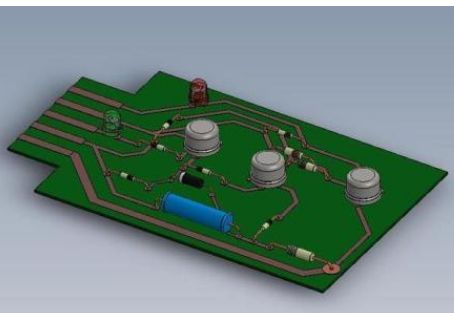Layout is a problem that PCB design engineers must face first. This problem depends on part of the content in the drawing, and some devices need to be set together based on logical considerations. However, it should be noted that components that are more sensitive to temperature, such as sensors, should be installed separately from components that generate heat, including power converters. For designs with multiple power settings, 12 volt and 15 volt power converters can be set in different positions on the circuit board, because the heat and electronic noise they generate will affect the reliability and performance of other components and the circuit board .
The above components will also affect the electromagnetic performance of the PCB board design. This is not only important for the performance and energy consumption of the PCB board, but also has a great impact on the economics of the PCB board. Therefore, all PCB board sold in Europe The equipment must be CE marked to prove that it will not cause interference to other systems. However, this is usually only in terms of power supply, and there are many devices that emit noise, such as DC-DC converters, and high-speed data converters. Due to the flaws in the PCB board design, these noises can be captured by the channel and radiated as a small antenna, resulting in spurious noise and frequency abnormal areas.

The problem of far-field electromagnetic interference (EMI) can be solved by installing a filter at the noise point or using a metal shell to shield the signal. However, adequate attention is paid to equipment that can release electromagnetic interference (EMI) on the PCB board, which allows the circuit board to choose a cheaper housing, thereby effectively reducing the cost of the entire system.
In the circuit board design process, electromagnetic interference (EMI) is indeed a factor that has to be taken seriously. Electromagnetic crosstalk can be coupled with the channel, thereby disrupting the signal into noise and affecting the overall performance of the PCB board. If the coupling noise is too high, the signal may be completely covered, so a more expensive signal amplifier must be installed to restore normal. However, if the signal circuit layout can be fully considered at the beginning of the circuit board design, the above problems can be avoided. Since the design of the circuit board will vary according to different equipment, different places of use, different heat dissipation requirements, and different electromagnetic interference (EMI) conditions, the design template will come in handy.
Capacitance is also an important issue that cannot be ignored in PCB board design, because capacitance will affect signal propagation speed and increase power consumption. The channel will be coupled with the line next to it or vertically traverse the two circuit layers, thus unintentionally forming a capacitor. By reducing the length of the parallel lines, adding a kink to one of the lines to cut off the coupling, etc., the above problems can be solved relatively easily. However, this also requires PCB engineering designers to fully consider the production design principles to ensure that the PCB design scheme is easy to manufacture, and at the same time avoid any noise radiation caused by the excessive bending angle of the circuit. The distance between the lines may also be too close, which will produce short loops between the lines, especially at the bends of the lines. Over time, metal "whiskers" will appear. Design rule detection can usually indicate areas where the loop risk is higher than normal.
This problem is particularly prominent in the design of the ground plane. A metal circuit layer may form a coupling with all the lines above and below it. Although the metal layer can effectively block noise, the metal layer also generates associated capacitance, which affects the running speed of the line and increases the power consumption.
As far as the design of multi-layer PCB boards is concerned, the through-hole design between different PCB board layers is probably the most controversial issue, because the through-hole design will bring many problems to the production of the circuit board. The through holes between the layers of the circuit board will affect the performance of the signal and reduce the reliability of the PCB board design, so full attention should be given.